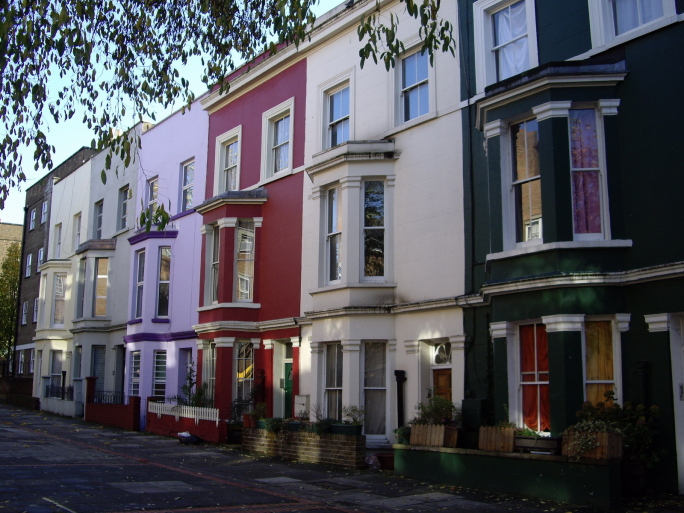 Taking the second step on the property ladder can be as much as challenge as the first but there are plenty of options available for home movers who don’t have much equity in their home. Rebekah Commane looks at the problems and solutions facing second steppers.
Taking the second step on the property ladder can be as much as challenge as the first but there are plenty of options available for home movers who don’t have much equity in their home. Rebekah Commane looks at the problems and solutions facing second steppers.
We are all very much familiar with the issues that face first-time buyers (FTBs) when it comes to securing a mortgage deal; the greatest hurdle they face is raising a deposit to allow them to secure a home loan while also dealing with high levels of expenditure on rental payments and bills each month. However, the government schemes in place to help them to attain a mortgage with a small deposit are well documented and lenders are making moves to accommodate them.
Meanwhile, second steppers, or first-time sellers, are facing the same plight as their first-time buyer counterparts. While it may seem that those who already own a home would be more favourable candidates for lenders, as house prices are hitting record highs they may not be in a position to release enough equity from their current properties. And if homeowners find themselves stuck on the first rung of the housing ladder, it inevitably has a knock on effect for the market as a whole as no new properties are coming onto the market for purchase.
Equity levels
The latest research from Lloyds bank found that prospective second-time buyer has 18 per cent, or £31,174, of the price of an average second home, a significant leap from -1 per cent in 2012.
While the amount of equity held by second steppers is at its highest since 2008, it remains far lower than 10 years ago when the average second-time buyer could put down 45 per cent of the cost of their next home with equity from their first property.
In Lloyds’ research the bank also found a significant North-South divide in affordability. The West Midland and East Midland are the most affordable regions for those looking to take the next step in the housing market, while London, the South West and South East are the least affordable.
The average deposit required for a second stepper in 2012 was £58,836, almost double that needed ten years prior, which stood at £31,189.
Earlier this year, the Step Up report from Post Office found that over a quarter of a potential second-time buyers are in negative equity or have not seen an adequate increase in the value of their home to allow for them to purchase another property.
But recent figures have shown that second steppers are finally beginning to see a turnaround in their fortunes as affordability improves.
Government schemes
While it is often thought that all government mortgage assistance schemes are aimed at FTBs, some are also targeted at second steppers.
Several lenders are offering 5 per cent mortgage deals through the government’s Help to Buy scheme, which is made up of two elements that can assist second steppers.
The first stage allows prospective homebuyers with a 5 per cent deposit access to at least 75 per cent of the cost of a property through a mortgage, with the remaining 20 per cent covered by an equity loan from the government. These loans are available to first-time buyers as well as home movers on properties up to a £600,000 cost. The loan is interest free for five years and you will begin paying a fee on the six year at a rate of 1.75 per cent, which will subsequently increase year on year based on the Retail Prices Index.
The second mortgage guarantee element is also open to second steppers, so long as the first property is not being retained. It cannot be a shared ownership or shared equity and cannot be rented out by the mortgage holder. The maximum on this element is also £600,000.
The government’s NewBuy scheme is also available to second steppers looking to buy a property that is newly built or a building that has been renovated into a new form of dwelling. Buyers again require just a 5 per cent deposit and the scheme has proved successful to date.
With NewBuy the maximum cost allowed on the property for purchase is £500,000 and it must be the only home you own; so you must be selling your first house. Again, you can’t use NewBuy for a buy-to-let mortgage and the dwelling must have been built by a builder involved with the scheme.
As with any mortgage, you will be means-tested to ensure you can afford to make repayments on your loan through government schemes before it is granted.
And don’t forget that lenders are increasingly offering competitive deals with lower deposits to meet the upturn demand and competition in the market, so if you have a small down payment you don’t have to depend on government schemes.
Affordability
Speaking to What Mortgage, housing economist at Lloyds, Nitesh Patel, said that affordability has improved for second steppers.
“Affordability has approved for those homeowners who are still living in their first home but looking to take their next step on the property ladder, as equity levels have improved in the last year”, insists Patel.
“The average price of a typical second stepper home, less their current equity position, stood at 4.4 times gross annual average earnings in June 2013, compared with a ratio of 4.9 in June 2012.
“Our research suggests that typical second steppers are in their first home, on average, for 5 years. Those who had bought at the top of the market (autumn 2007) may be the most constrained by the fall in average price during the downturn; those FTBs in the past few years might be in a better position with house prices improving.”
With regards to the average deposit currently required by home movers in the UK, Patel says it stood at £70,540 so far this year, just 6 per cent higher than a decade earlier in 2003 when those buying a new home were typically putting down £66,812 in a down payment towards their next property.
As Patel asserts, the outlook for second steppers in 2014 largely depends on the continuing improvement in the market, but there is reason for those planning a home move to feel optimistic.
“The other current drivers of the home mover market are record low mortgage rates and improving equity levels, resulting from rising prices. These factors will still be relevant in 2014.”




